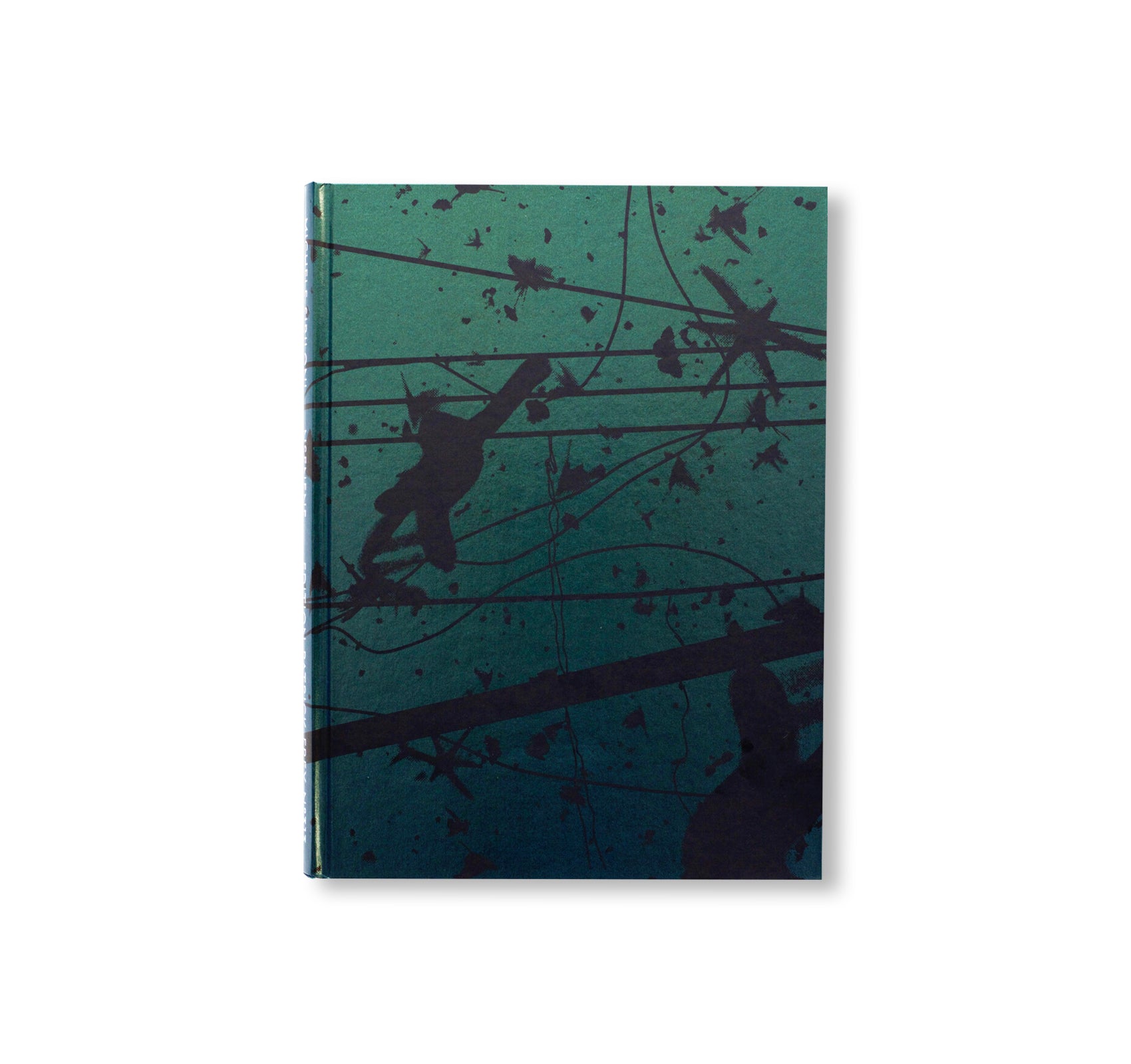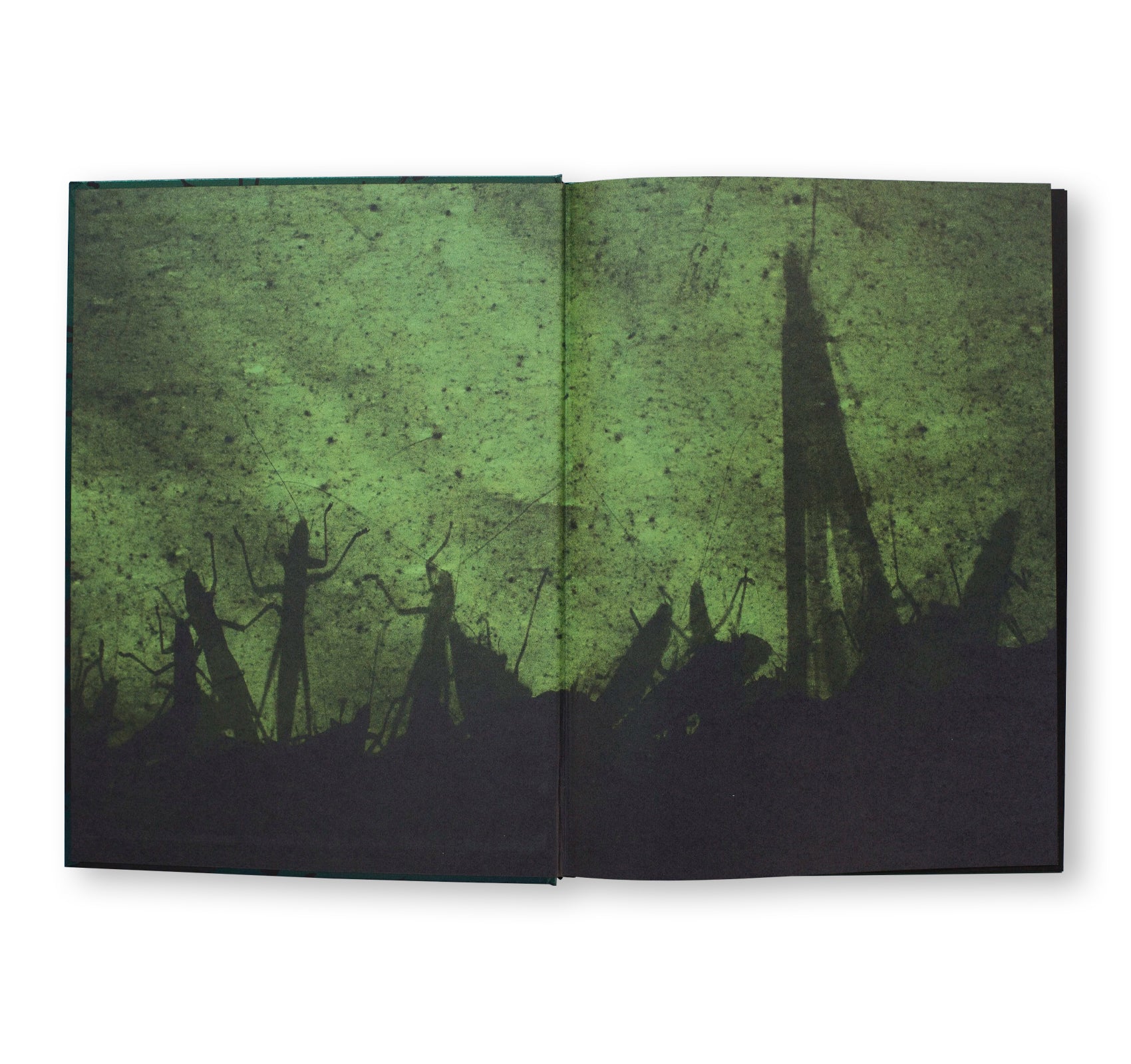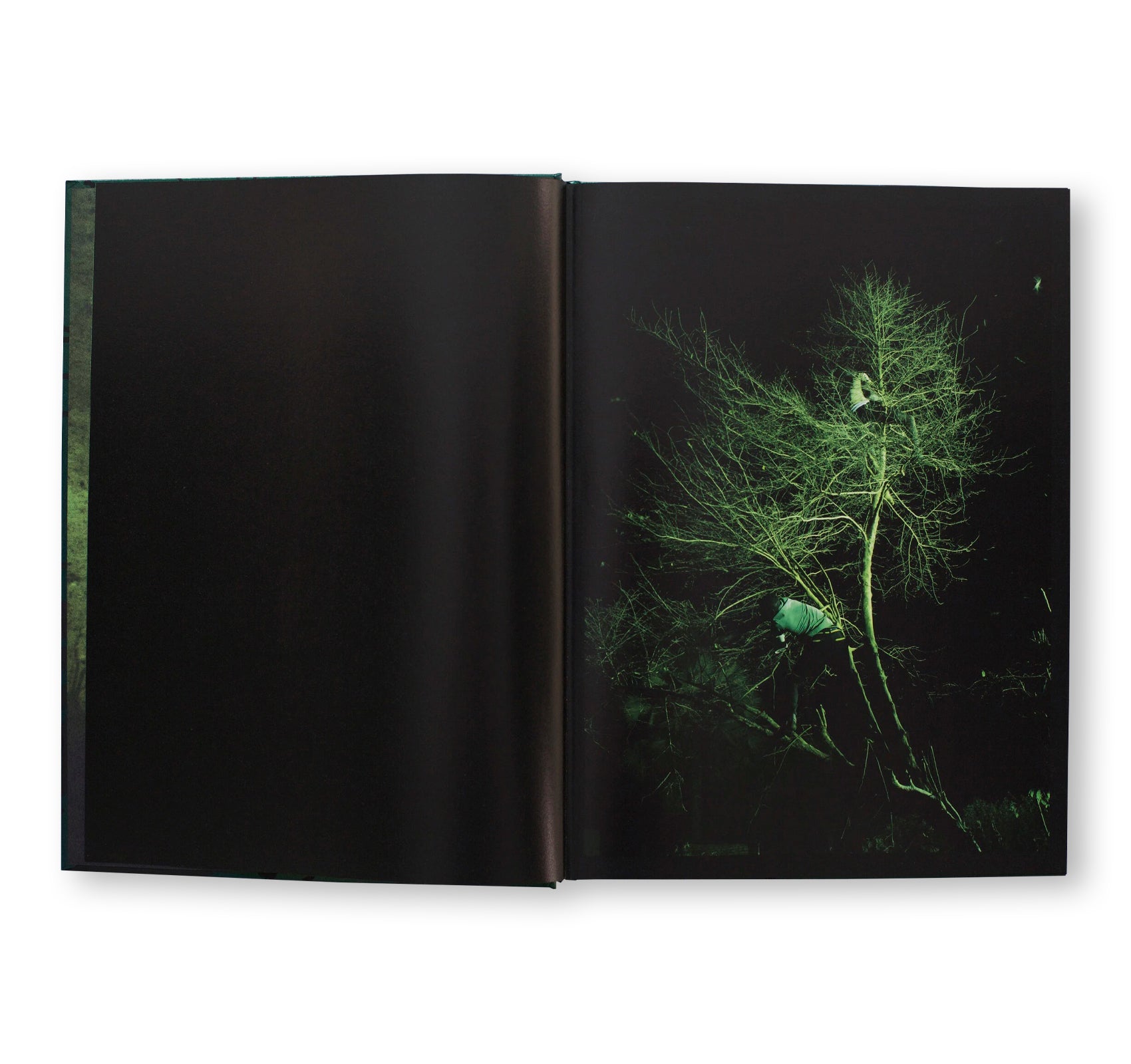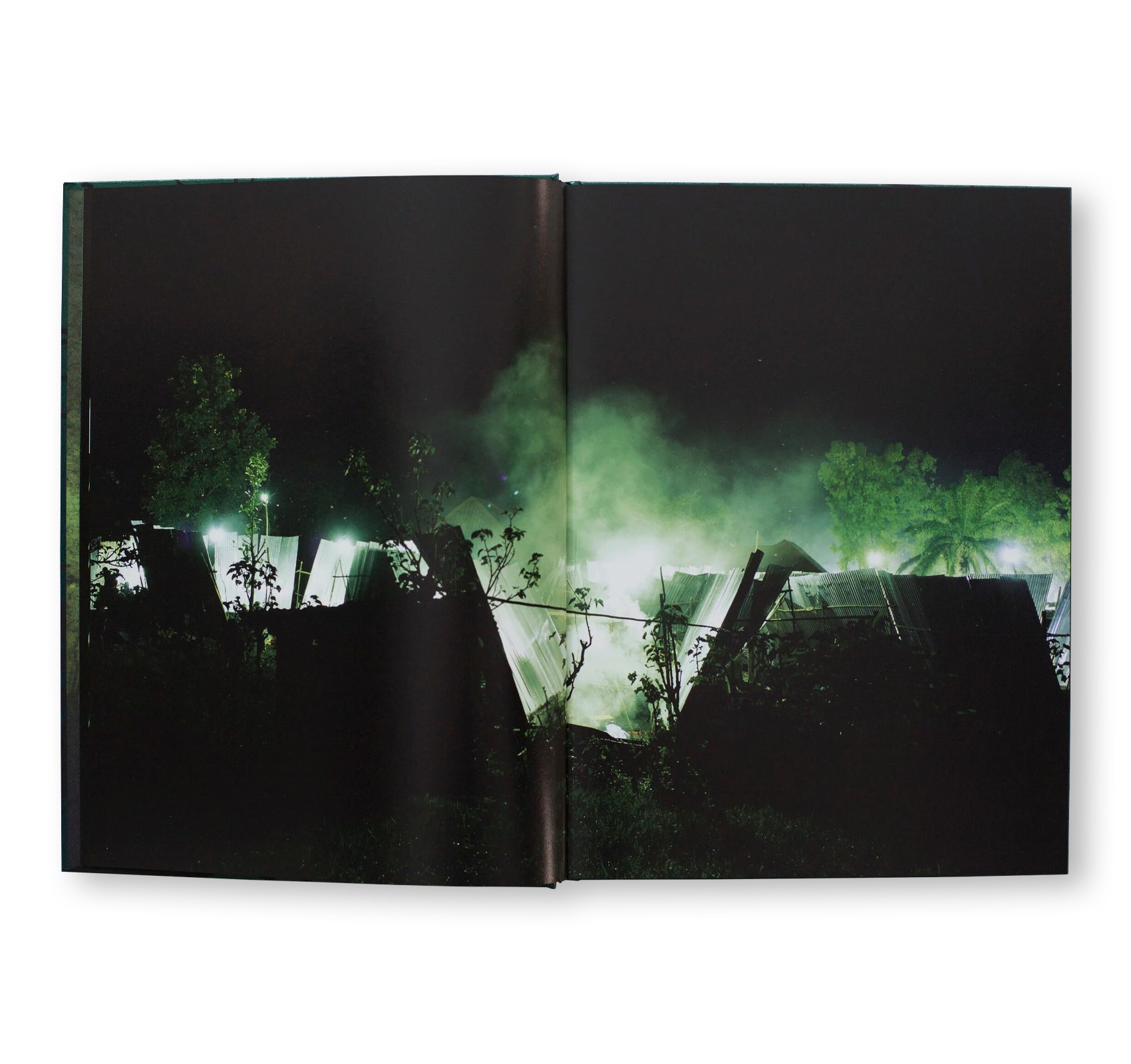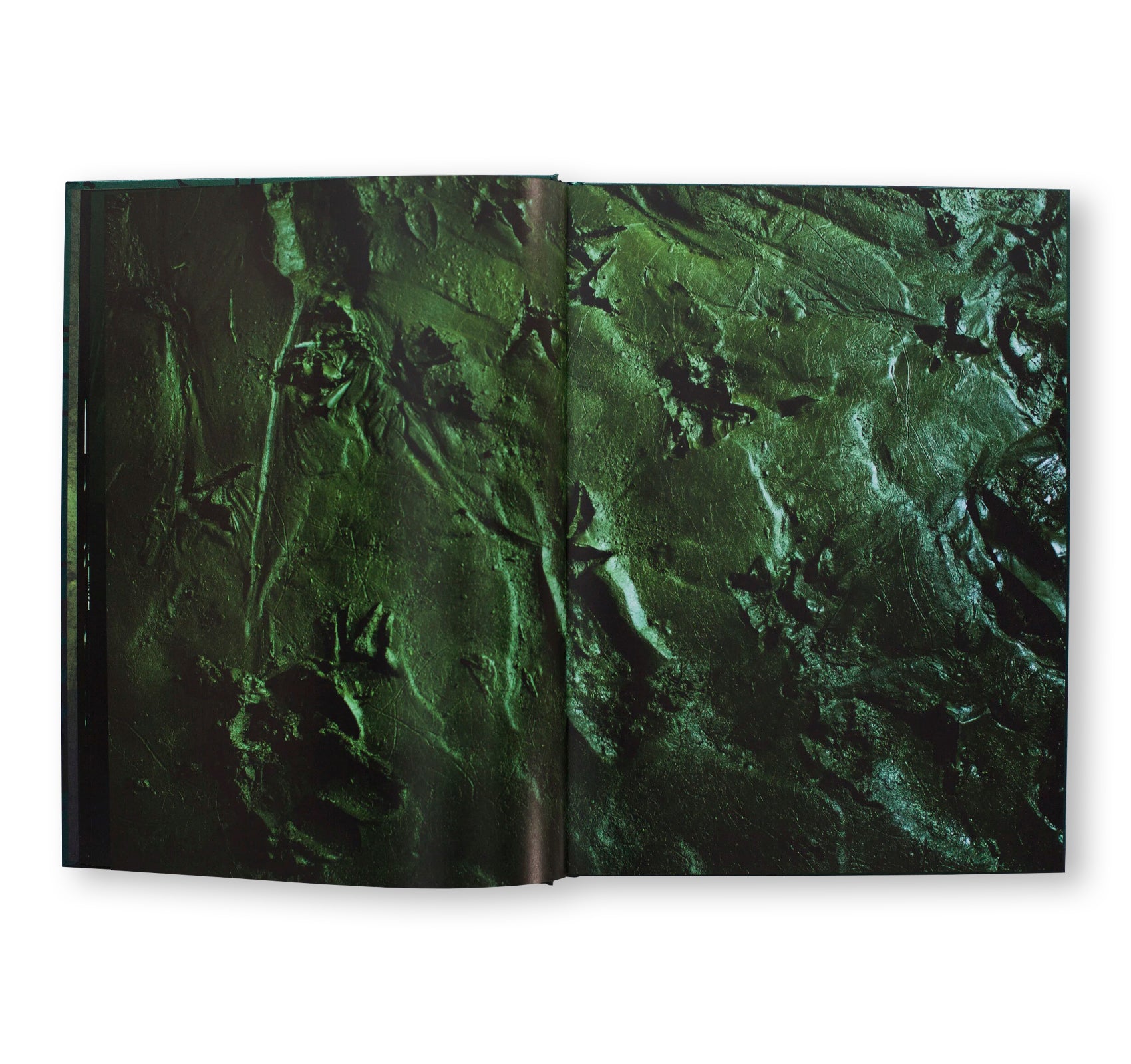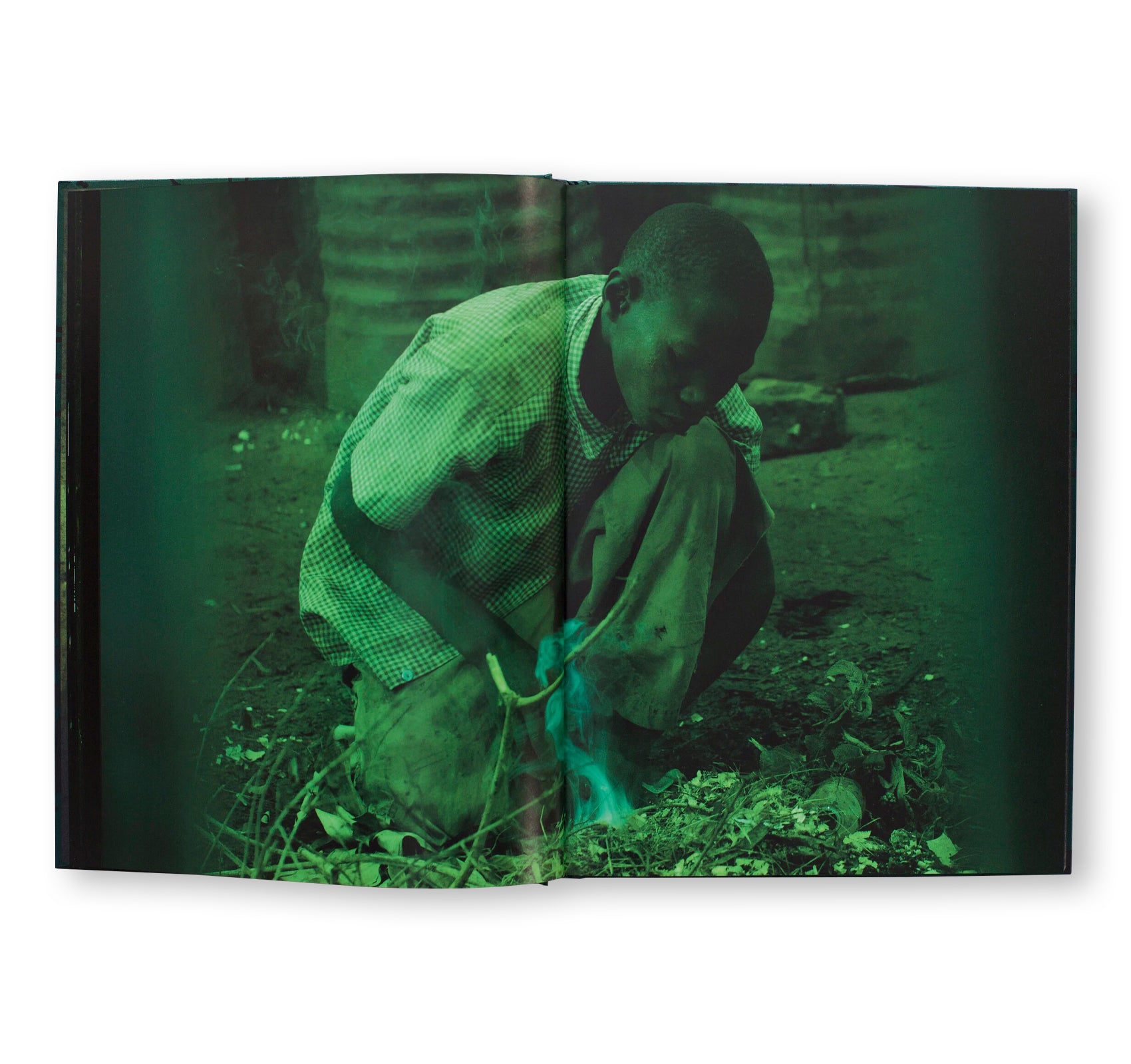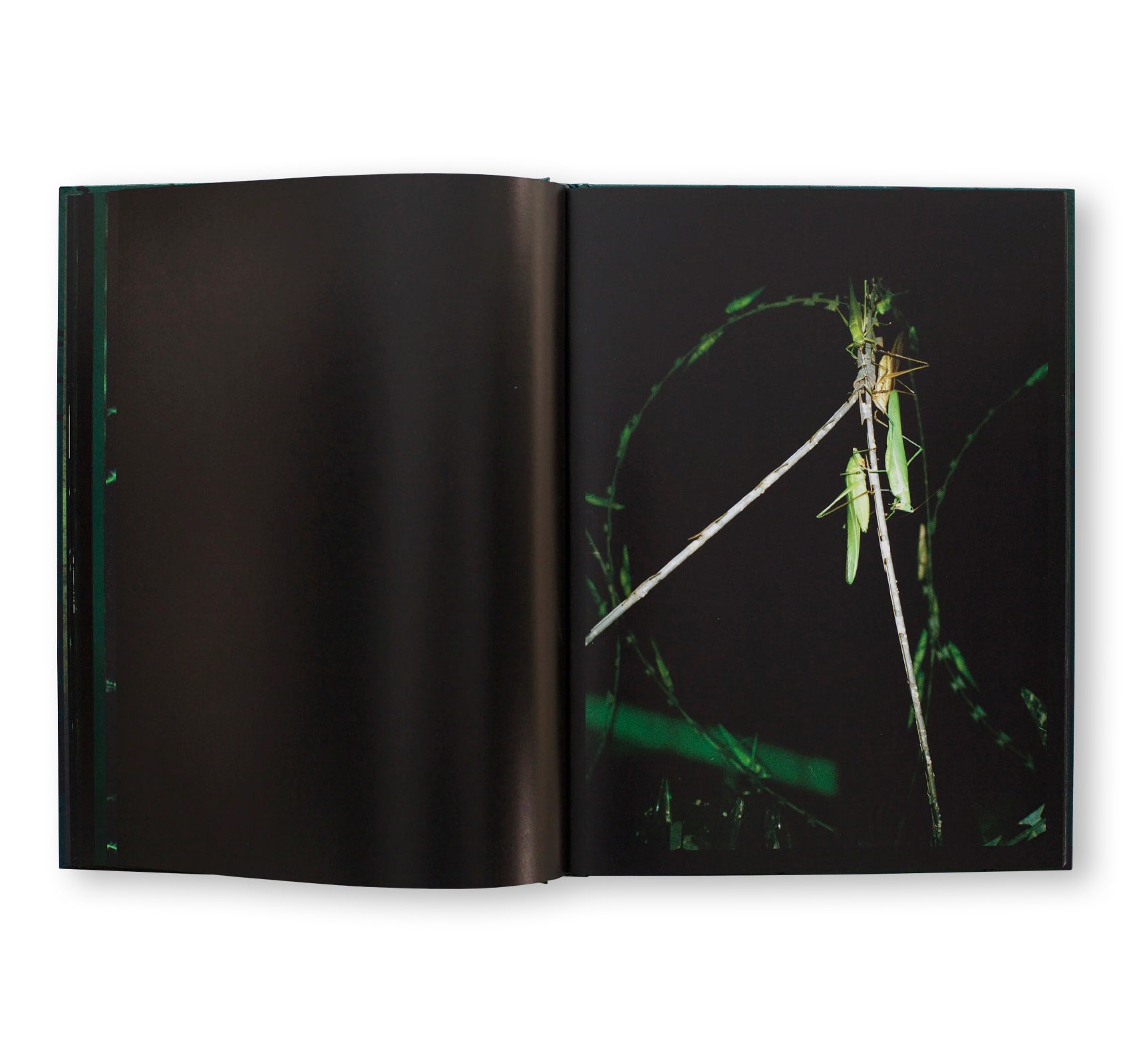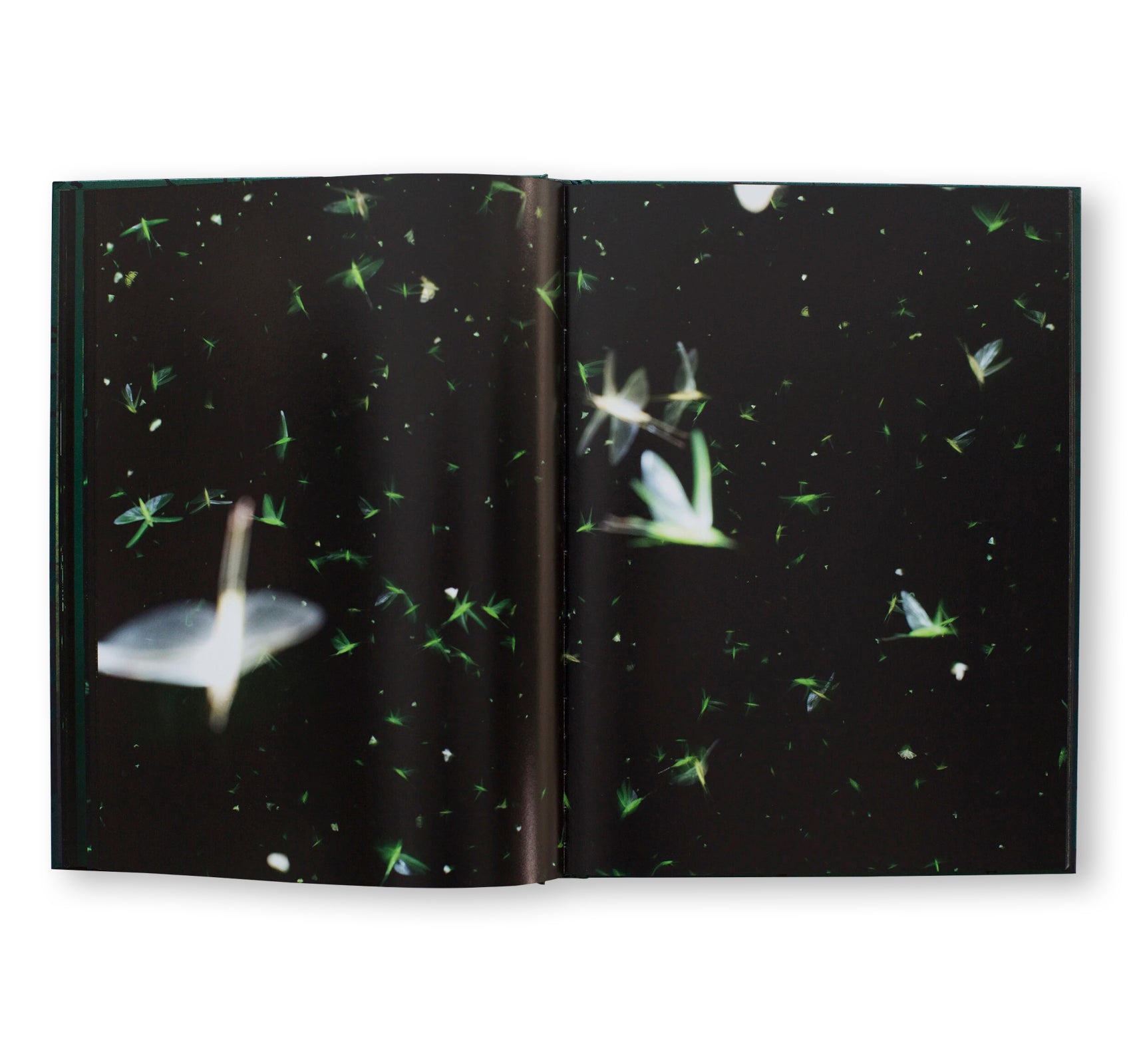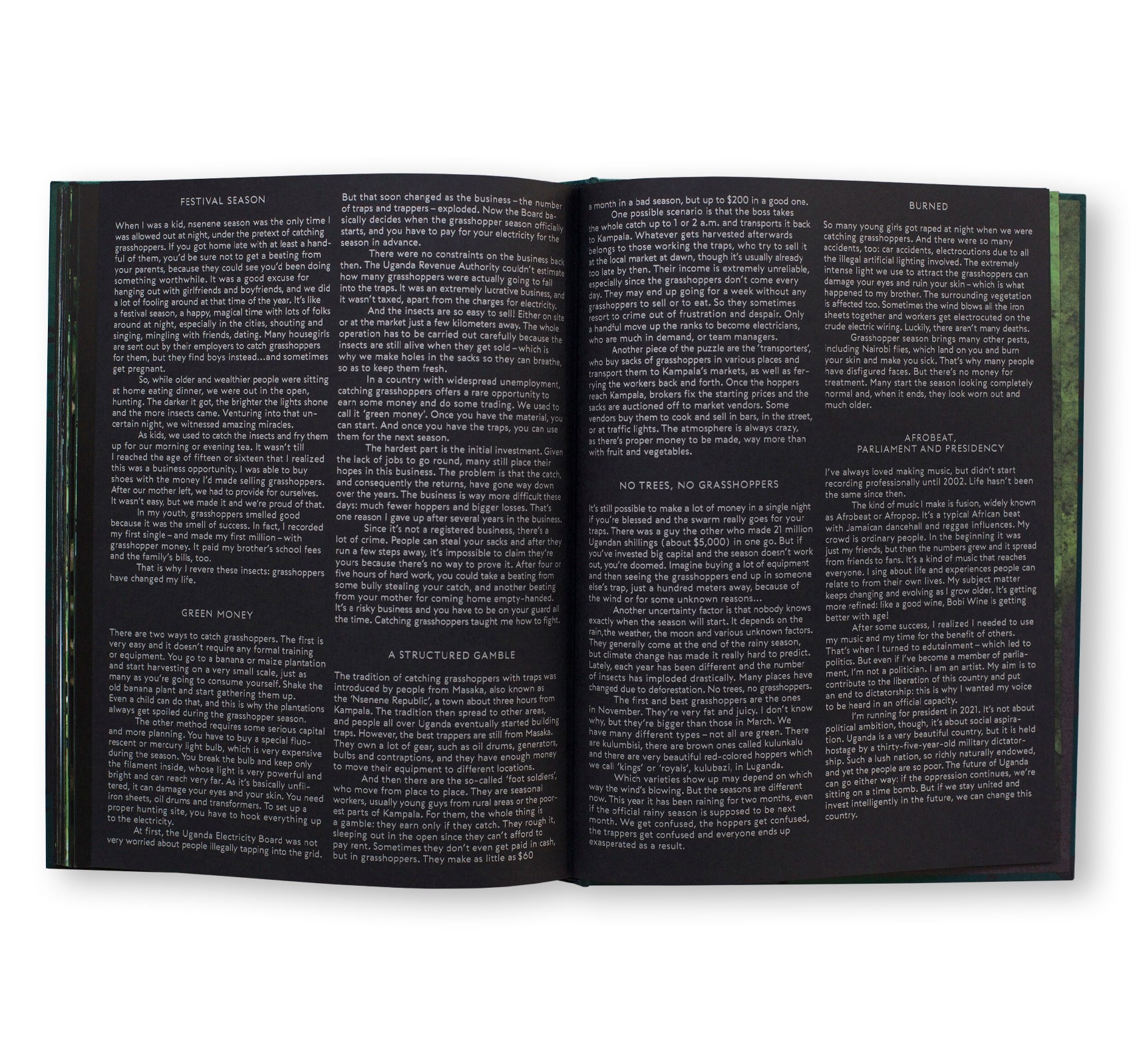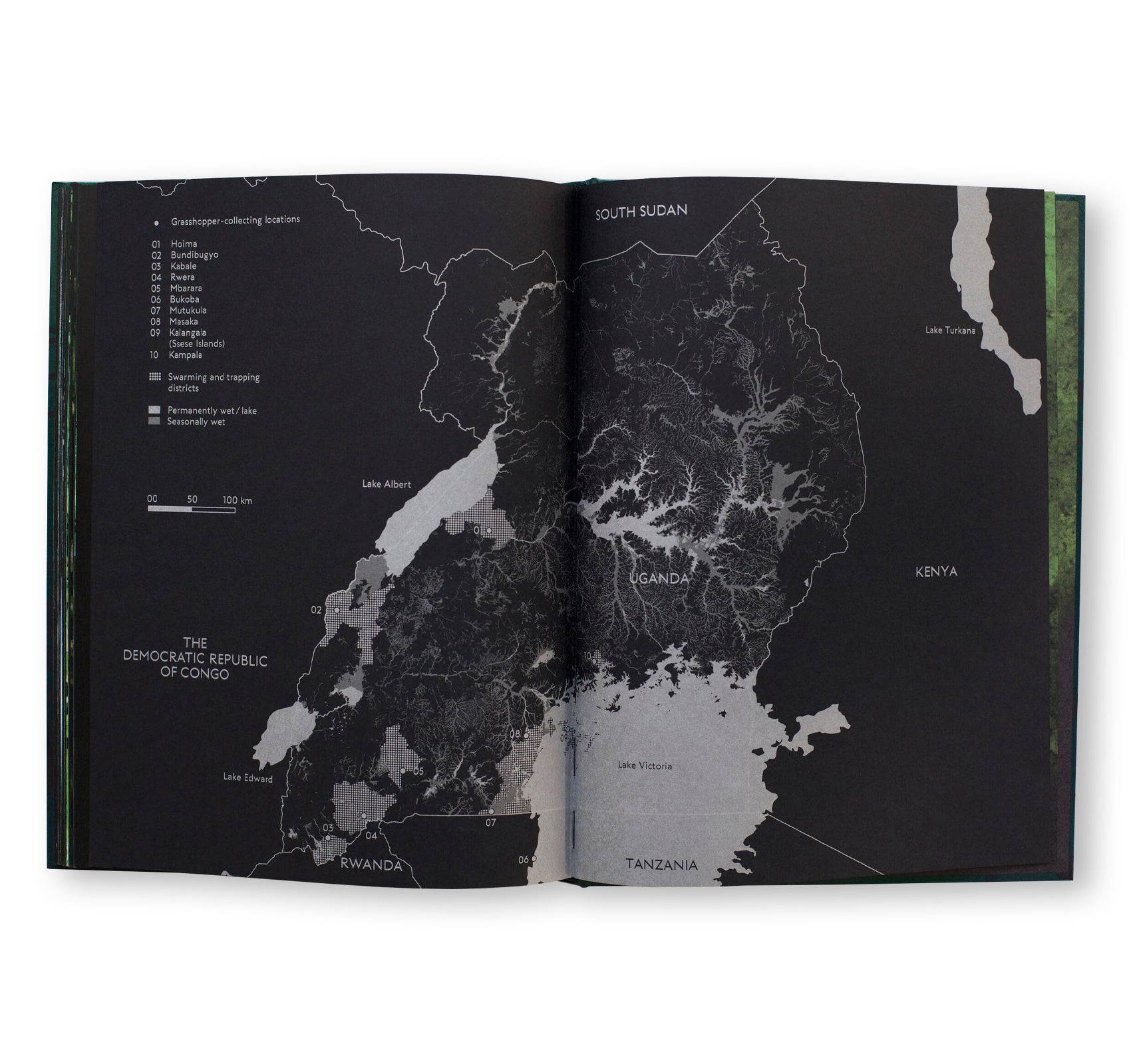NSENENE by Michele Sibiloni
イタリア人フォトグラファー、ミケーレ・シビローニ(Michele Sibiloni)の作品集。タイトル「セネネ(Nsenene)」はガンダ語で「キリギリス」を意味するが一般的には「バッタ」と呼ばれ、ウガンダの重要な収入源であり珍味でもある。本書は年に2回、雨季の直後に大群で移動するキリギリスを明け方まで捕獲するウガンダの人々を記録。夜霧と焚き火の煙の中で、緑色の昆虫が一面に広がる様子は、国中が別世界のような雰囲気に包まれ、巧妙に作られた道具や罠が不気味な効果をもたらしている様子が収められた。国連食糧農業機関(FAO)は、食用昆虫をより多くの人が食生活に取り入れれば、世界の飢餓を減らし、食糧安全保障を向上させることができると指摘しているが、近年森林伐採によりその生息数が減少しているほか、気候変動により雨が降らなくなりつつあるアフリカで収穫タイミングが予測しづらくなっているという現状があることも示唆されている。過去と未来、伝統と近代化の狭間にあるキリギリス収穫を捉え、ウガンダの状況だけでなく地球全体の将来的な展望についても訴えかけている。
Nsenene are a delicacy and an important source of income in Uganda. Technically bush crickets but generally referred to as “grasshoppers”, nsenene migrate en masse twice a year, right after the two rainy seasons. Huge swarms fill the sky shortly before sunrise. So, night after night during cricket season, many Ugandans stay up till dawn to catch the critters. The omnipresence of the lustrous greenish insects amid the nocturnal mist and the smoke of bonfires submerges the whole country in an otherworldly atmosphere, an eerie effect compounded by all the bizarre paraphernalia involved, especially the fancifully contrived tools and traps. Flurries of hectic activity alternate with long periods of waiting around and killing time. Given their high protein content, they remain a promising source of food for the future, according to the UN Food and Agriculture Organization (FAO), which points out that if more people were to add edible insects to their diet, that could reduce world hunger and improve food security. However, deforestation has decimated migratory insect populations in recent years and some cricket species are now critically endangered. To make matters worse, the rains in Africa are becoming less and less predictable due to climate change, and cricket-harvesting depends entirely on timing. Italian photographer Michele Sibiloni has captured the Ugandan cricket-harvest, an activity that straddles the very fine line between past and future, tradition and modernization, in his highly atmospheric visual idiom. His immediate cinematographic sequences speak volumes not only about the Ugandan situation, but also about the future prospects for our planet as a whole.
